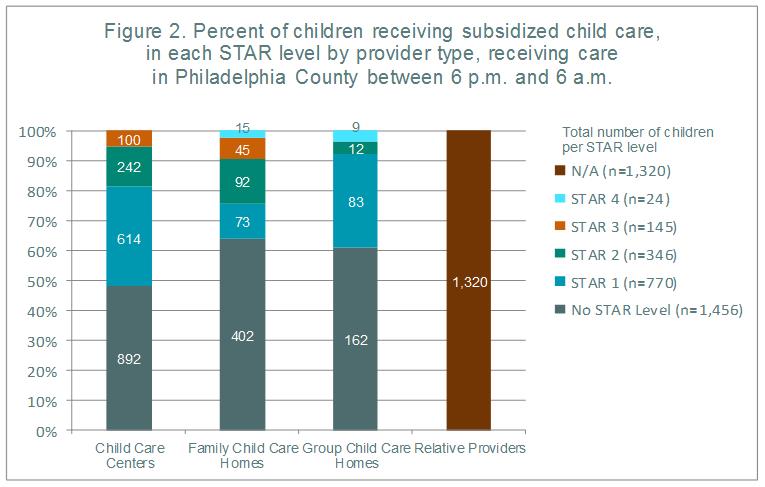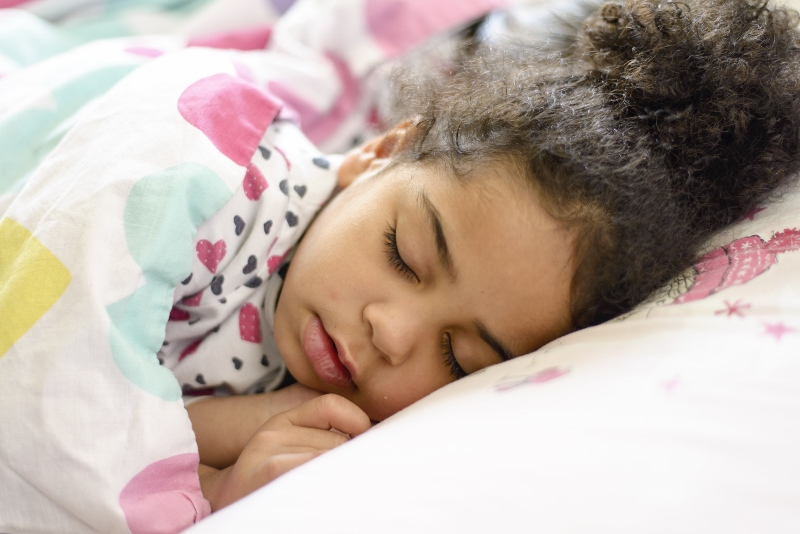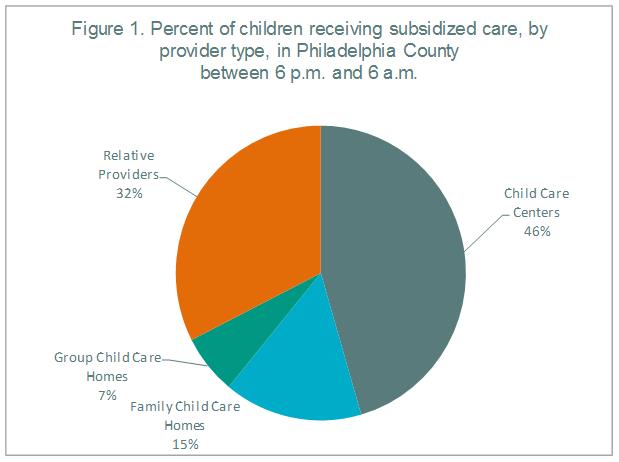By Laura Sosinsky
Working during the evening, overnight, or weekend has become so common – the “new normal” – that labels like “nonstandard” or “nontraditional” may no longer fit these schedules. Nationally, 20% of the workforce works at night or on the weekend. Among low-income or low-wage hourly workers, the rate is between 28% and 50%. Women are more likely than men to work nonstandard hours, especially women with low incomes. Many have young children in need of care while they work. In Philadelphia, over 4,000 children receiving child care subsidies (or 10% of all children receiving subsidized child care) are in care between the hours of 6:00 pm and 6:00 am.1
Many workers in these jobs also face volatile, unpredictable scheduling. Nationally, about half of the nearly 30% of low-income mothers of children under 6 who work nonstandard hours are on irregular schedules. Over one-third of children, and nearly half of Hispanic children, in low-income households have a parent who receives their work schedule less than one week in advance.
The vast majority of parents (72%) who work these schedules do so because of the demands of the job rather than by choice. Employment sectors requiring these hours include jobs in retail, restaurants and service sectors, security, health care, and jobs at plants and in warehouses. Students and members of the military also face child care challenges due to schedules that are not 9-to-5.
Child care options are very limited when parents work nontraditional or irregular schedules. In recent years, researchers and news outlets (including the AP, Forbes, NPR, and the New York Times) are reporting on the growing numbers and the ways that child care providers and families are trying to adjust, but accommodations still fall short of the need. Centers may not offer part-time slots and most require families to commit to a set schedule. Nationally, only 8% of centers offer any care during nonstandard hours. Home-based providers are often more flexible: about a third of licensed family child care providers, nearly two-thirds of unregistered family child care providers, and more than 80% of home-based providers who are often unpaid relatives offer care during nonstandard hours.
In Philadelphia, the majority of children receiving subsidized child care who are in care between 6 p.m. and 6 a.m. are in home-based care arrangements, as shown in Figure 1.1 The remaining 46% are in center care. This rate is higher than the national rate of children in center-based care during non-standard hours and may include children who have only some hours of care outside the normal day. However, it is much lower than the overall rate for Philadelphia of children receiving subsidized child care in centers, which is about 80%. While less information is available on nonstandard-hour care arrangements for children in families who are not receiving subsidies, it is likely that this rate is lower as subsidies often make center-based care more affordable for low-income families that may otherwise be out of reach.
Data Source: PELICAN January 2017.1
Note: The indicator that is collected to identify children receiving care between the hours of 6 p.m. and 6 a.m. is not consistently used, therefore these numbers may not be accurate (and most likely underreported).
Quality of care during nonstandard hours is not well defined, but QRIS systems such as Keystone STARS can provide helpful information. As shown in Figure 2, while many children receiving subsidized child care in Philadelphia who were in care between 6 p.m. and 6 a.m. were with STAR-rated providers, most were not. One in five children receiving subsidized care in the evening hours or overnight were receiving care from eligible providers rated STAR 2 or above (19%). Six percent were in care with STAR 3 or STAR 4 providers.1, 2

Data Source: PELICAN January 2017 1, 2
Notes: The indicator that is collected to identify children receiving care between the hours of 6 p.m. and 6 a.m. is not consistently used, so these numbers may not be completely accurate (likely underreported). Relative providers are not eligible to participate in STARS. Numbers of children are indicated in the key. Providers’ STAR Ratings are from January 2017, and therefore reflect Keystone STARS standards prior to the changes from the re-visioning process; as of July 1, 2017, all licensed providers in Pennsylvania automatically receive a STAR 1 rating.2
More than two-thirds (68%) of Philadelphia children receiving subsidized child care who were in care during nonstandard hours were receiving care from a provider who was not in STARS, as of January 2017.2 About half of those (52%) were in care with a provider who was licensed (i.e., a center, family child care provider, or group family child care provider) but not in STARS,2 and the other half (48%) were in care with relatives or neighbors who are not eligible for STARS. The quality of care of providers who are not in STARS has not been evaluated to the degree undertaken by participating providers. As for relative and neighbor caregivers, evidence from around the country suggests that the quality of license-exempt family, friend, and neighbor (FFN) care varies widely (as it does for all child care) but FFN caregivers may lack supports such as access to training and resources that would help them provide high levels of quality to the children in their care.
What's next? Understanding the scope of the issue is the first step to being able to shape efforts to help children and families facing the increasingly common challenge of parents’ nonstandard work schedules. Strategies to address the issue may include:
- adjustments to workplace conditions,
- increases in the supply of high-quality flexible and nonstandard-hours child care, and
- revisiting subsidy provisions to facilitate affordable access to high-quality care and support providers who offer it during nonstandard hours.
Discussions of effective strategies will have the greatest chance of success when multiple stakeholders are engaged, including working parents of young children, employers and the business community, child care providers, and state and local policymakers.
1 Pennsylvania’s Enterprise to Link Information for Children Across Networks (PELICAN) data up to January 2017 provided by the PA Office of Child Development and Early Learning (OCDEL) to PHMC on July 14, 2017. Pennsylvania’s Enterprise to Link Information for Children Across Networks (PELICAN) is the Pennsylvania Departments of Public Welfare and Education management information system for all of the state’s early learning programs. http://www.pakeys.org/uploadedContent/Docs/PELICAN/PELICAN%20As%20One.pptx
2 As per the latest STARS Standards after the re-visioning process, all licensed providers in Pennsylvania automatically receive a STAR 1 rating as of July 1, 2017.
Laura Sosinsky, Ph.D., supports successful early childhood programs as a consultant with the Early Childhood Action Collective at PHMC. As a developmental psychologist with a focus on infant and child development, early care and education, and applied evaluation and implementation research, Laura is currently also a Visiting Assistant Professor at Haverford College and a member of the Board of Directors of the Child Care Council of Westchester County, NY. Laura earned her B.A. in Psychology from Cornell University and her M.S. and Ph.D. in Developmental Psychology from Yale University.

